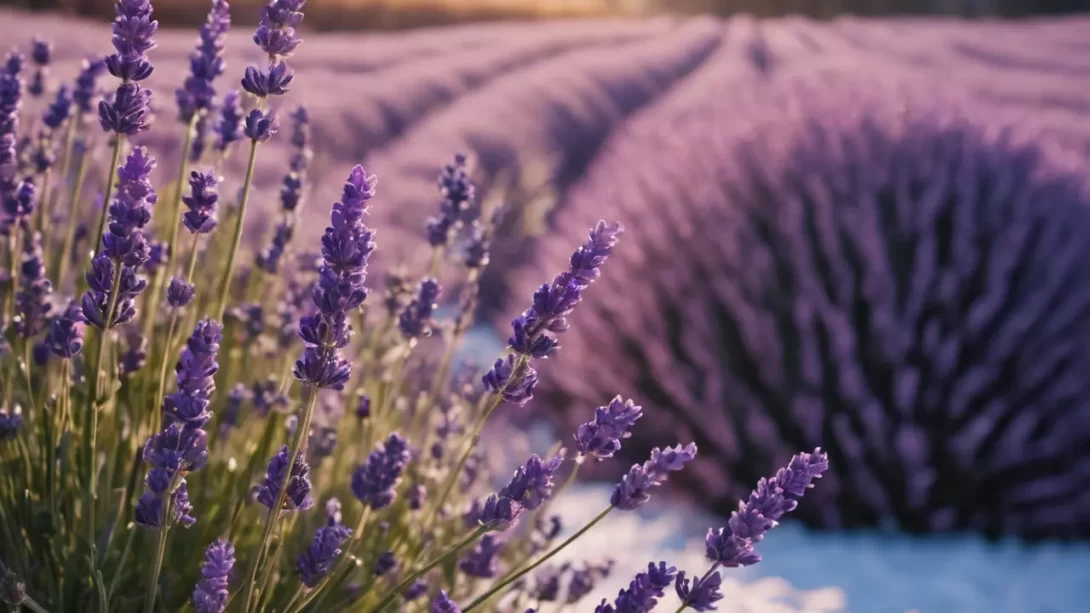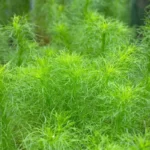Lavender, a beloved perennial herb, is renowned for its fragrant flowers and versatile use. Though often associated with vibrant summer blooms, lavender undergoes noticeable changes through the seasons. Understanding these seasonal transformations, particularly during winter, is crucial for gardeners looking to maintain healthy lavender plants year-round.
Lavender’s Appearance in Winter
During the winter, lavender’s appearance can vary significantly depending on the species and the climate it’s grown in. Generally, lavender plants become more subdued in color and growth. The vibrant purple hues of the flowers fade, and the plant often takes on a more muted, gray-green appearance. In some species, the foliage may turn a silver-gray color, which can add a subtle beauty to winter gardens. The plants also stop producing new growth and enter a phase of dormancy.
Preparing Lavender for Winter
Proper preparation in the fall can greatly impact how lavender plants survive the winter. Before the onset of colder weather, it’s advisable to prune the plants, cutting back the stems by about a third. This pruning helps prevent damage from heavy snow or frost and can encourage healthier growth in spring. However, it’s important not to cut into the woody base of the plant, as this can hinder its recovery. Ensuring good drainage is also crucial, as lavender plants are susceptible to root rot in overly moist conditions. Mulching can help protect the roots from extreme cold, but should be applied carefully to avoid moisture accumulation around the base of the plant.
Impact of Climate on Lavender During Winter
The winter climate has a significant impact on the appearance and health of lavender plants. In mild winter regions, lavender may retain much of its green foliage, though growth will be minimal. The plants can still look relatively vibrant, albeit less lush than in the growing season. In contrast, in areas with harsh winter conditions, including heavy frost and snow, lavender plants can appear dormant and may lose some of their foliage, becoming more woody and bare. It’s essential for gardeners to understand the specific needs of their lavender varieties in relation to their local winter climate.
Common Challenges for Lavender in Winter
Winter presents several challenges for lavender plants. Frost damage is a common issue, particularly for young or newly planted lavenders that haven’t fully established. The symptoms of frost damage include blackened foliage and a lack of new growth in spring. Excessive moisture, leading to root rot, is another concern, especially in climates with wet winters. Lavender prefers well-draining soil and can struggle in prolonged damp conditions. Additionally, plants may also experience drying from cold winds, which can desiccate the foliage. Gardeners might consider using burlap wraps or similar protective measures for their lavender plants in areas with severe winter conditions.
Winter Dormancy in Lavender
Dormancy is a natural state for lavender during winter. This period of rest is crucial for the plant’s health, allowing it to conserve energy and prepare for the next growing season. During dormancy, lavender plants will exhibit minimal growth and may appear less vibrant. Healthy dormant lavender should maintain its structural integrity and not show signs of rot or severe frost damage. It’s important to recognize the difference between a plant that is healthily dormant and one that is experiencing stress or damage due to winter conditions.
Post-Winter Recovery and Spring Growth
As winter comes to an end and temperatures begin to rise, lavender plants start to emerge from dormancy. This transition period is critical for the health and vigor of the plants in the upcoming growing season. Gardeners should start to see new growth, typically emerging from the base or along the stems of the plant. This is also the time to assess any winter damage and prune accordingly to encourage healthy new shoots. It’s important to wait until the threat of frost has passed before beginning any major pruning or planting efforts.
Preparing Lavender for the Upcoming Growing Season
To ensure a robust comeback in spring, a few additional steps can be taken as winter wanes. Clearing away any debris around the plants, such as fallen leaves or excess mulch, helps to prevent moisture buildup and disease. If the soil is particularly dense or waterlogged, consider improving drainage or even transplanting the lavender to a more suitable location with well-draining soil. Light fertilization can also be beneficial, but it’s essential to use a product suitable for lavender and to avoid over-fertilizing, which can lead to excessive soft growth that is more susceptible to damage.
Conclusion
In winter, lavender may not display its characteristic vibrancy, but with proper care, it can survive and even thrive during the colder months. Understanding the plant’s needs during dormancy, protecting it from extreme weather, and preparing it for the growing season are all crucial steps in maintaining healthy lavender plants. The resilience of lavender in winter adds another dimension to its appeal, making it a valuable and enduring addition to any garden. As gardeners welcome the signs of spring, they can look forward to the rejuvenation of their lavender plants, anticipating the fragrant blooms and lush growth that the new season brings.



